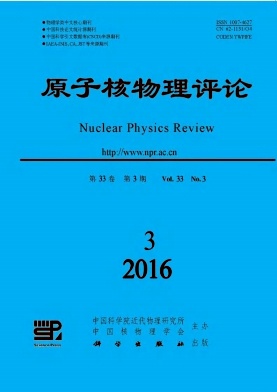|
[1]
|
WARDA M,VIÑAS X,ROCA-MAZA X,et al.Phys Rev C,2010,81:054309. |
|
[2]
|
CHEN L W,KO CHE M,LI B A,et al.Phys Rev C,2010,82:024321. |
|
[3]
|
GAIDAROV M K,ANTONOV A N,SARRIGUREN P,et al.Phys Rev C,2012,85:064319. |
|
[4]
|
DONG J M,ZUO W,GU J Z.Phys Rev C,2013,87:014303. |
|
[5]
|
ZHANG Y X,DANIELEWICZ P,FAMIANO M,et al.Phys Lett B,2008,664:145. |
|
[6]
|
TSANG M B,ZHANG Y X,DANIELEWICZ P,et al.Phys Rev Lett,2009,102:122701. |
|
[7]
|
KUMAR S,MA Y G,ZHANG G Q,et al.Phys Rev C,2011,84:044620. |
|
[8]
|
ZHANG Y X,COUPLAND D D S,DANIELEWICZ P,et al.Phys Rev C,2012,85:024602. |
|
[9]
|
ZHANG Y X,TSANG M B,LI Z X,et al.Phys Lett B,2014,732:186. |
|
[10]
|
STEINER A W,GANDOLFI S.Phys Rev Lett,2012,108:081102. |
|
[11]
|
TAKAMI K,REZZOLLA L,BAIOTTI L.Phys Rev Lett,2014,113:091104. |
|
[12]
|
LATTIMER J M,PETHICK C J,PRAKASH M,et al.Phys Rev Lett,1991,66:2701. |
|
[13]
|
SIEMENS P J.Nucl Phys A,1970,141:225. |
|
[14]
|
VAUTHERIN D,BRINK D M.Phys Rev C,1976,3:626. |
|
[15]
|
DANIELEWICZ P,LACEY R,LYNCH W G.Science,2002,298:1592. |
|
[16]
|
AMORINI F,CARDELLA G,GIULIANI G,et al.Phys Rev Lett,2009,102:112701. |
|
[17]
|
RUSSOTTO P,de FILIPPO E,PAGANO A,et al.Phys Rev C,2010,81:064605. |
|
[18]
|
HUDAN S,MCINTOSH A B,de SOUZA R T,et al.Phys Rev C,2012,86:021603. |
|
[19]
|
WANG R S,ZHANG Y,XIAO Z G,et al.Phys Rev C,2014,89:064613. |
|
[20]
|
TSANG M B,STONE J R,CAMERA F,et al.Phys Rev C,2012,86:015803. |
|
[21]
|
LATTIMER J M,STEINER A W.Eur Phys J A,2014,50:40. |
|
[22]
|
TSANG M B,LIU T X,SHI L,et al.Phys Rev Lett,2004,92:062701. |
|
[23]
|
HOMBACH A,CASSING W,MOSEL U.Eur Phys J A,1999,5:77. |
|
[24]
|
KOHLEY Z,MAY L W,WUENSCHEL S,et al.Phys Rev C,2011,83:044601. |
|
[25]
|
ZHANG Y X,COUPLAND D D S,DANIELEWICZ P,et al.Phys Rev C,2012,85:024602. |
|
[26]
|
LI B A,DANIELEWICZ P,LYNCH W G.Phys Rev C,2005,71:054603. |
|
[27]
|
de FILIPPO E,PAGANO A,RUSSOTTO P,et al.Phys Rev C,2012,86:014610. |
|
[28]
|
de FILIPPO E,PAGANO A,RUSSOTTO P,et al.Phys Rev Lett,2009,102:112701. |
|
[29]
|
COLIN J,CUSSOL D,NORMAND J,et al.Phys Rev C,2003,67:064603. |
|
[30]
|
ZHANG Y X,LU X H,ZHAO K,et al.Nuclear Physics Review,2011,28(4):377.(in Chinese)(张英逊,卢晓华,赵凯,等.原子核物理评论,2011,28(4):377) |
|
[31]
|
BARAN V,COLONNA M,di TORO M.Nucl Phys A,2004,730:329. |
|
[32]
|
ZHANG Yingxun,LI Zhuxia.Phys Rev C,2005,71:024604. |
|
[33]
|
LI B A,KO C M,REN Z.Phys Rev Lett,1997,78:1644. |
|
[34]
|
WU Q H,ZHANG Y X,XIAO Z G,et al.Phys Rev C,2015,91:014617. |






 甘公网安备 62010202000723号
甘公网安备 62010202000723号 DownLoad:
DownLoad: